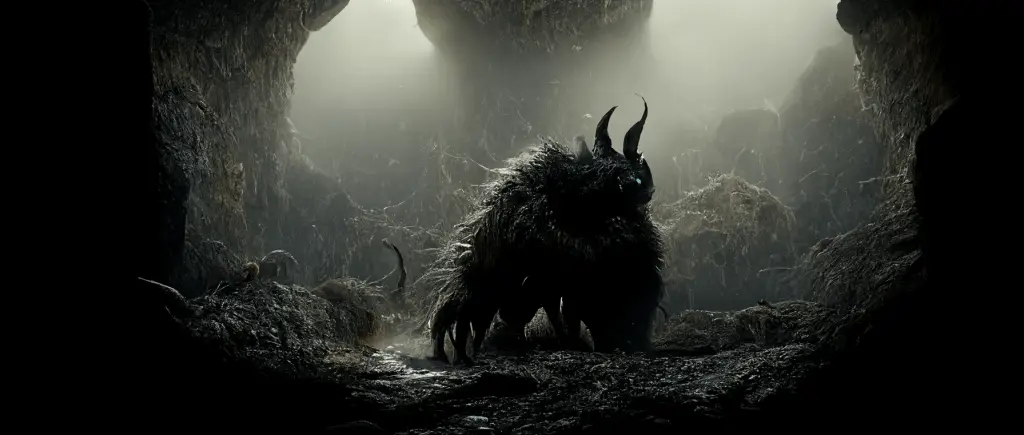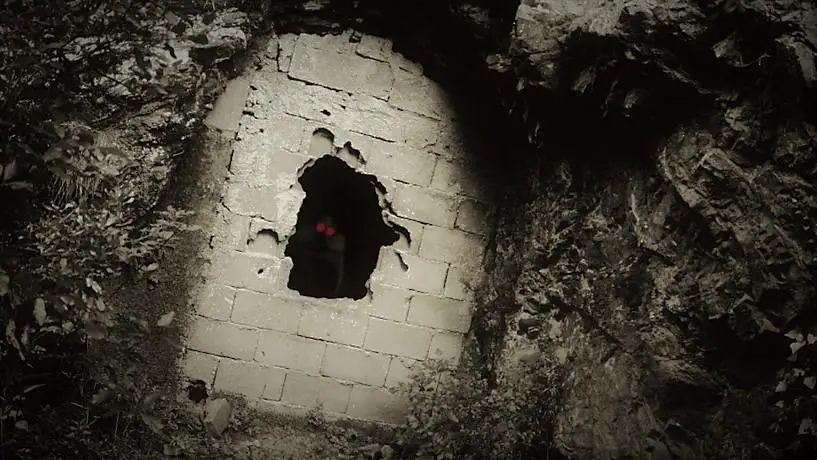Share the Lore!
By: Alex Postrado
The Tale Slavic People Told to Scare Their Children
There are boogeyman-like beings in folklore from all over the world.
Sometimes, they are the creatures under your bed, while other times, they are the ones thumping inside your closet.
They could even be the thing that goes bump in the dead of night!
But, basically, a boogeyman is two things:
An imaginary monster embodying the things you most feared as a child and a necessary tool in scaring children off from misbehaving.
Fascinatingly, its form widely varies from household to household and from culture to culture. Yet even without taking on a single defining appearance, the boogeyman has cemented its name as one of the most popular monsters of all time.
And it is perhaps due to this same popularity that even in Serbian folklore, a similar figure is believed to emerge from the darkness.
Enter the Serbian Boogeyman. Locals call it the Bauk.
It is an animal-like beast with a weird gait that is said to lurk in dark places or abandoned houses.
And if this fearsome monster ever gets the chance, it is prepared to grab you with its paws and eat you down to the bare bones!
So, if you are in need of one more reason why you shouldn’t be randomly wandering off into dark areas, who knows, maybe a child-aimed horror story will do.

What is the Bauk?
In Serbian mythology, the Bauk is a carnivorous, animal-like monster that lurks in dark places. Its typical dwellings are abandoned houses, barns, and holes that light fails to reach.
Because of this, children are typically warned not to go meandering off to such areas 一 alone or not.
Nefarious and completely terrifying 一 the Bauk, according to the legend, is a monster that locals know full well to avoid.
Though malicious by nature, the Bauk does not go looking for victims to prey on. Rather, they tend to keep out of sight and skulk in their hiding places in the hopes that an unsuspecting person would walk in.
And when someone does, the Bauk 一 in all of its terrifying glory 一 will grab and carry the victim away to devour them.
Despite the popularity of this monster in Serbian lore, its appearance remains a mystery, for the most part.
Legends say that the creature resembles a bear and has eyes that glow in the dark.
The Bauk is also notable for its gait as it has a lumbering or even somewhat clumsy manner of walking.
But, aside from these, nothing else is known about the semblance of the feral monster 一 which could be because they are often in hiding, instead of out hunting.
However, even if you don’t know exactly how they look, you could still hear them first and that might give you a slim chance at survival!
As the stories go, the Bauk is said to emit a sound that is more or less the same as “fingernails scraping against wood“.
This sound is its purported croak 一 one that signifies that the Bauk is preparing to consume a potential victim.
Of course, no one wants to end up as the Bauk’s chew toy!
So, it would be useful to know if it is possible to beat the monster and if it is, how it could be done.
Luckily, the Bauk has two important weak points 一 light and loud noises.
Exposure to brightness 一 especially harsh lighting 一 will not only incapacitate the Bauk but more importantly, it will hurt them. Some accounts even say that prolonged exposure to sunlight can completely obliterate the creature.
In a similar fashion, loud noises can also scare off the creature forcing it to scurry off to safety.
So, gear up with a powerful flashlight if you really have no choice but to go to a dark location.

The Cousins of the Serbian Boogeyman
Because the concept of boogeymen is undoubtedly universal, it is not surprising that there will be creatures from all around the world that resemble it 一 or at the very least, have been inspired by it.
If we would go back to the definition of the term “boogeyman“, we would understand that it is any kind of supernatural or folkloric being that parents tell their children to deter them from behaving badly.
And with this, boogeymen don’t necessarily need to be beast-like creatures like the Bauk.
Though one that pretty much falls under the same category as the Serbian monster is the H’awouahoua 一 a popular monster with Algerian origins.
Legends describe its body as being a hodgepodge of different animal parts with eyes of flaming spit. Even more horrifying is its coat which is made from the clothes of all the children it has eaten!
On the other hand, the best-known boogeywoman of Slavic countries is Baba Yaga.
An ancient creature that is said to dwell in a hut that has the legs of a giant chicken and is known to fly around in a giant mortar while carrying a pestle.
Tales of Baba Yaga equally depict her as a wise, kind woman and as a cruel, horrible hag 一 making it kind of confusing why she is considered a boogey-figure in the first place.
Unless, of course, you have already read about her origins.
In South Africa, the Tokoloshe is a creature most commonly associated with mischief. They are said to be the creation of sangomas, which are traditional healers.
In Indonesia, their boogeyman-like monster takes the form of Wewe Gombel 一 a vindictive ghost of a woman whose death was caused by a broken heart. Seemingly antithetical, Wewe Gombel kidnaps children but doesn’t harm them. Instead, she rescues them from bad parents 一 only returning them, unharmed, when the parents have truly mended their ways.
Another hair-raising creature similar to the Bauk is the Mètminwi. Haitian lore describes it as a man with long legs that devours anyone it sees on the streets by midnight.
So, clearly, the Bauk has company.
And if you are among the faint-of-heart, then I’m sorry to tell you that all these mentioned monsters just make a part of the scarily long list.

The Origins of the Bauk
Believe it or not, the Bauk’s origins go way back.
It is said that the dark creature has originated from the Southern Slavs 一 from their beliefs and folklore. And as the tales go, the Serbian Boogeyman has always been regarded as a harmful and malevolent creature.
Other sources also say that the Bauk comes from bau 一 its onomatopoeia 一 which is similar to boo 一 the thing we say if we want to scare someone.
A mythological creature of horror 一 the beast is also said to be considered somewhat similar to Bugbears, which are wild goblin-like creatures that are typically covered in hair and are often running amok.
Both the Bauk and Bugbears are used as common scare tactics that are told to discipline children.
But while the Bugbears’ existence emerged from the need to reprimand disobedient kids, some interpretations of the Bauk lore say that the supernatural Serbian predator actually originated from real-life bears.
Considering the Bauk’s habits and attributes, some say that they may have been inspired by bears that have once existed in Serbia but have gone extinct for a significant amount of time now and are mostly known only in legends 一 an argument that implies that the story of the Bauk is an exaggeration of these extinct bears as told by people who did not encounter the animal.

No matter how contradicting the origin of the Bauk may be, its purpose remains the same:
As a way to keep naughty children safe and far from dark and suspicious places.
No wonder why after years of retelling, the Bauk is still present and its story is being passed again.
In some ways, living up to the age-old saying that “fear is an excellent motivator.” And this time around, maybe it indeed is.
References:
Bauk - The Demonic Paradise Wiki Bauk - Monster Wiki Bauk - Meet The Slavs Bauk - Myths And Folklore Wiki 15 Terrifying Boogeymen From Around The World
